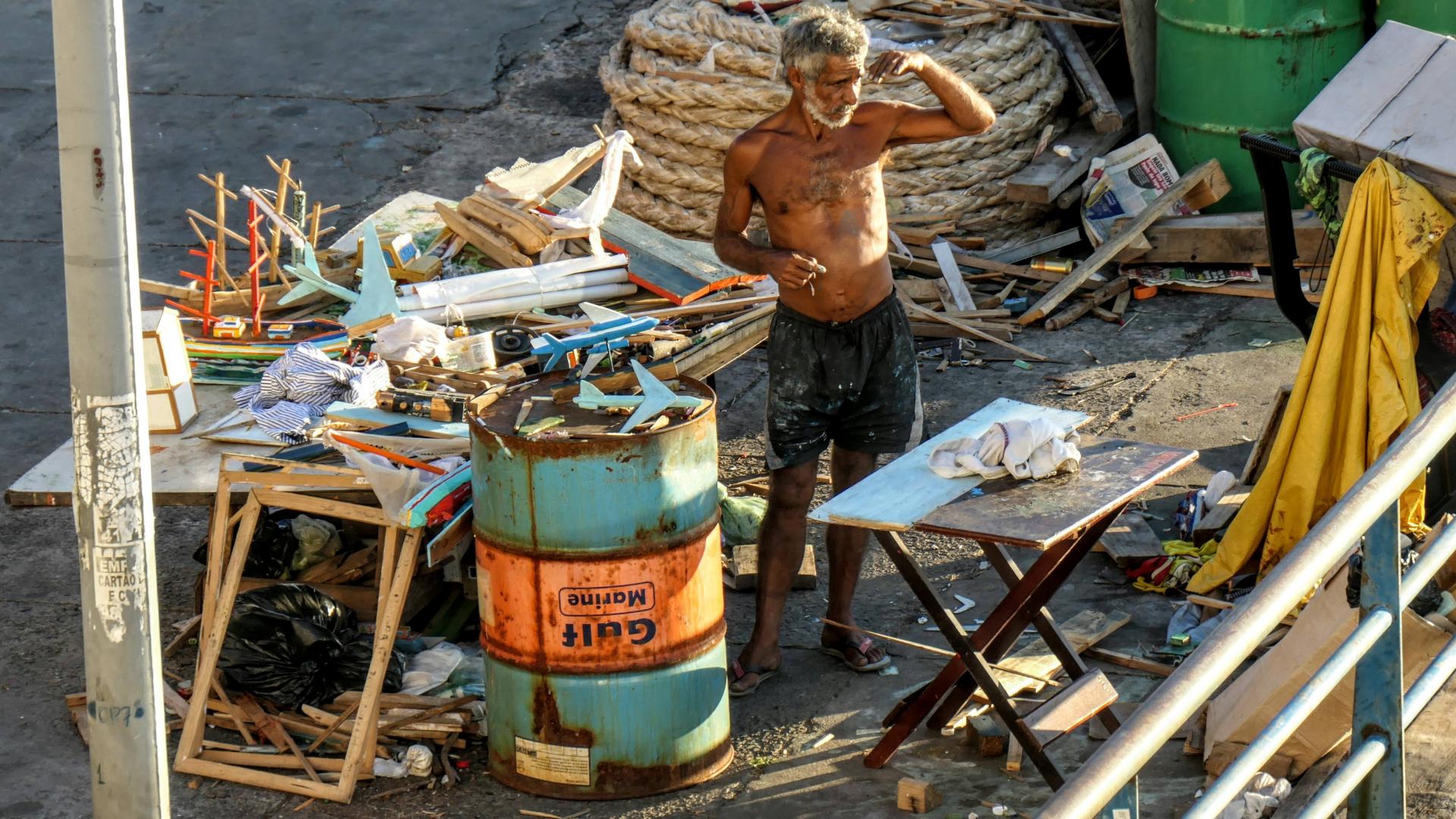Waste Disposal and Recycling in Brazil

Brazil is the country of superlatives. The largest country in South America, the most biodiverse country on earth, and the Amazon is the world's most water-rich river. Everything here is bigger, more colorful, more intense. Brazil is also the leader in recycling of aluminium cans and PET bottles, with rates of over 98 percent. At the same time, however, it is also home to the largest landfill in South America, and thus one of the largest in the world. These are the two faces Brazil shows us, when it comes to waste management.
The Catadores – Brazil's garbage collectors
Anyone who has ever made a trip to Brazil knows them, the Catadores. As Brazil's private waste collectors, they shoulder the waste of the megacities. Like many other emerging countries, Brazil has developed so rapidly in recent years, that infrastructure and waste disposal have not kept pace. Thus, people made it their profession to collect recyclable waste from streets and landfills to sell it to companies that extract recycling raw materials from it. The Catadores are ostracized by society, yet their function is irreplaceable. It is thanks to them, that almost every Coke and beer can in Brazil is recycled. In the megacity of Belo Horizonte, for example, the Catadores collect four times as much waste as the city.
Often, they are women without education who cannot find work and collect garbage under unhealthy conditions to resell it. The companies receive around 90 percent of the profits, leaving only about 10 percent to the Catadores. Nevertheless, their situation is much better today than it was 20 years ago. Waste collection is now recognized as a profession, and organized waste pickers are seen as legitimate stakeholders, who can voice their opinions at local, state, and national level. In addition, the national "Solid Waste and Carbon Finance Project" is developing strategies to engage waste pickers in local waste management systems.
The 2014 World Cup – The start of a modern recycling project
While cooperation between Catadores and recycling companies works well, the public sector often lags behind with its tasks. For example, 80 percent of Brazilian municipalities did not have a plan for their waste management until early 2014. In the wake of the 2014 World Cup in Brazil, however, this was to change. The "Jardim Gramacho" garbage dump in Rio de Janeiro, the largest in South America to date, was removed in 2012 and replaced by a modern recycling plant. The recycled PET bottles were used to make the chairs for the newly built stadium in the capital Brasília.
The largest garbage dump outside Brasília was also closed in the beginning of 2018 and replaced by a modern landfill and sorting plant. Almost 1,000 former Catadores were trained at the modern facilities. As a role model for other Brazilian cities, they are working with universities nationwide to train engineers in sustainable waste management. The goal is for Brazil's entire industry to become much more climate-friendly.
Pioneer Curitiba – The "green capital of Latin America"
Curitiba, the "green capital of Latin America," proves that Brazil is on the right track. Long-time mayor Jaime Lerner is considered the founding father of the ecological city and the inventor of sustainable urban development. Thanks to his commitment, a green belt has been created on the hills of Curitiba that is exceptional even by European standards. One million trees have been plantet, that adorn the city as green lungs, and pavilions made of the simplest materials have been erected in the parks, blending in perfectly with the landscape. The pavilions are the trademark of the capital of Paraná, of which the Curitibans are particularly proud. The Glass Palace is especially popular with the inhabitants. It was built in 1991 within a very short time from recyclable metal tubes, wires, and glass. The Ópera de Arame was also built in the backwaters of the greenbelt and grows almost organically out of a wooded wetland. The opera looks like a small water castle that is definitely worth visiting! Where a Botanical Garden now sprawls in Curitiba, there used to be a smelly garbage dump.
Jaime Lerner also wanted to improve the living conditions in the inner city in the nineties and fight against the problems of population growth. Thus, he launched the "garbage that is not garbage" campaign, which became a successful method of waste separation. Favela residents are motivated to collect recyclable waste in their settlements and deliver it to brightly painted garbage trucks in exchange for bus tickets, exercise books, vegetables, or fruit. This system was later taken up by other cities and is still practiced today.
European cities can also take Curitiba's waste management as an example. After all, who wouldn't be motivated when rewarded for recycling?
If you are curious to experience the most organized and cleanest city in South America, you should definitely pay Curitiba a visit during your Brazilian vacation!
Sources: www.dw.com, www.taz.de, www.wertstoffblog.de

